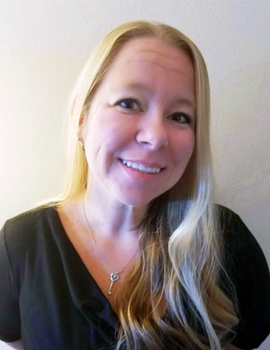
Casey Larsen, PhD
Assistant Professor
Faculty Email: clarsen@ben.edu
Phone: 630-829-6570
Office Location: Birck 329
Education:
- Ph.D. Chemistry, University of California, San Diego – San Diego State University Joint Doctoral Program – 2012
- B.S. Biology; Minor: Chemistry, San Diego State University – 2004
Courses Taught: Organic Chemistry Lecture and Laboratory, General Chemistry, Organometallic Chemistry, Introduction to Biochemistry, and Honors General Chemistry Laboratory
Patents
Douglas Grotjahn, Casey Larsen, Gulin Erdogan, Erik Paulson. “Terminal Alkene MonoIsomerization Catalysts and Methods,” US Patent, 2017, 9,708,236.
Recent Publications:
Casey R. Larsen and Douglas B. Grotjahn.* “The Value and Application of Transition Metal Catalyzed Alkene Isomerization In Industry” Applied Homogeneous Catalysis with Organometallic Compounds: A Comprehensive Handbook in Three Volumes; Boy Cornils, Wolfgang A. Herrmann, Matthias Beller, and Rocco Paciello, Eds.; Wiley-VCH Verlag GmbH & Co. KGaA. Third Edition, 2018, pages 1365-1378
Jeffrey Camacho-Bunquin,* Magali Ferrandon, Uggal Das, Fulya Dogan, Cong Liu, Casey R. Larsen, Ana E. Platero-Prats, Larry A. Curtiss, Adam S. Hok, Jeffrey T. Miller, SonBinh T. Nguyen, Christopher L. Marshall, Massimiliano Delferro, and Peter C. Stair. “ Supported Aluminum Catalysts for Olefin Hydrogenation” ACS Catal. 2016, 7, 689.
Casey R.Larsen, Erik R. Paulson, Gulin Erdogan, and Douglas B. Grotjahn.* “A Facile, Convenient, and Green Route to (E)-Propenylbenzene Flavors and Fragrances by Alkene Isomerization” Synlett, 2015, 26, 2462.
Douglas B. Grotjahn, Casey R. Larsen, and Gulin Erdogan. “Bifunctional catalyst control of alkene isomerization” Topics in Catalysis, 2014, 57, 1483.
Graham E. Dobereiner, Gulin Erdogan, Casey R. Larsen, Douglas B. Grotjahn, Richard R. Schrock. “A One-Pot Tandem Olefin Isomerization/Metathesis-Coupling Reaction.” ACS Catal. 2014, 4, 3069
Casey R. Larsen, Gulin Erdogan, and Douglas B. Grotjahn. “General catalyst control of the monoisomerization of 1-alkenes to trans-2-alkenes.” J. Am. Chem. Soc. 2014, 136, 1226.
Casey R. Larsen and Douglas B. Grotjahn.* “Stereoselective Alkene Isomerization Over One Position.” J. Am. Chem. Soc. 2012, 134, 10357.
Research Interest: Transition metal-catalyzed isomerization of alkenes, which involves the atom economical migration of carbon-carbon double bonds. The challenges to be met include: positional and stereochemical selectivity, substrate generality, and simplicity of catalyst use. Alkene isomerization is an important process in the chemical industry that contributes to many applications, including the SHOP process, DuPont’s adiponitrile process, Takasago synthesis of (-)-menthol, and for the synthesis of fragrances, to name a few.
Students will learn techniques in organic synthesis to synthesize parts of the catalyst and organic substrates for catalysis; organometallic synthesism to make the catalyst; and molecule characterization to analyze the synthesized compounds and products made during catalysis. Students will not only perform chemistry in open air, but will be exposed to air free techniques (Schlenk techniques and glove box).
Project 1: Synthesis of Royal Jelly
Royal Jelly is a natural product synthesized by worker bees as a form of nutrition for the queen bee in a colony, where this compound has been reported to have pharmacological properties. The current synthetic route requires 6 steps for its completion. We are seeking a more economical approach to its synthesis.
Project 2: Synthesis of Pheromones
Pheromones are signaling molecules naturally synthesized by organisms as a social cue to impact social behaviors. Harnessing unique reactivity using the alkene isomerization catalyst has the potential to lead to a class of Lepidopteran pheromones.
Project 3: Construction of a Catalytically Active Metal Organic Framework (MOF)
Metal Organic Frameworks (MOFs for short) are a subclass of polymeric compounds. Organic scaffolds are linked together with structural metals to form 3-dimensional structures that have pores for molecules, solvent or substrates, to move in and out of the structure. With the right organic scaffold linker, we have the potential of making a new class of catalysts using organometallic synthesis.
